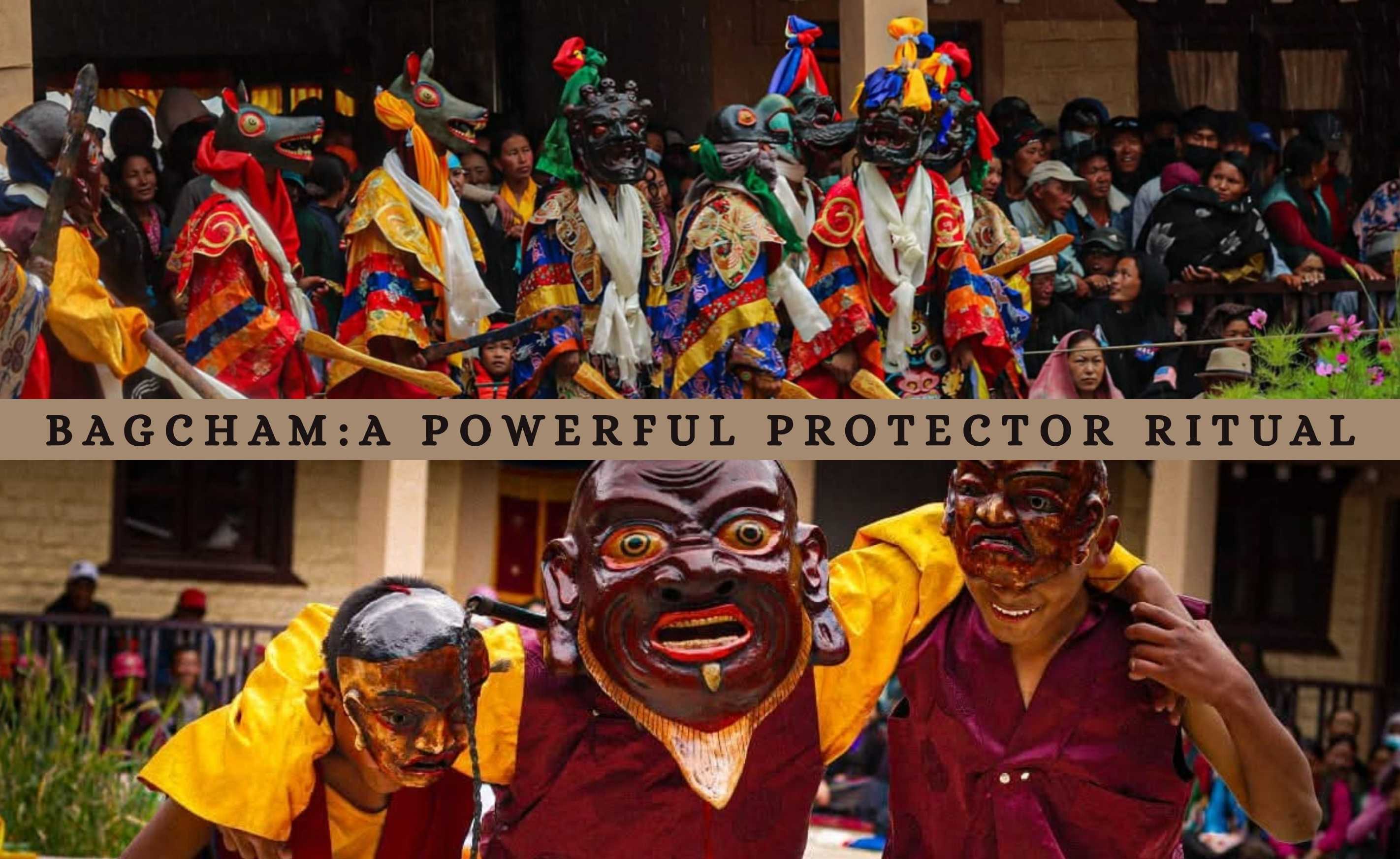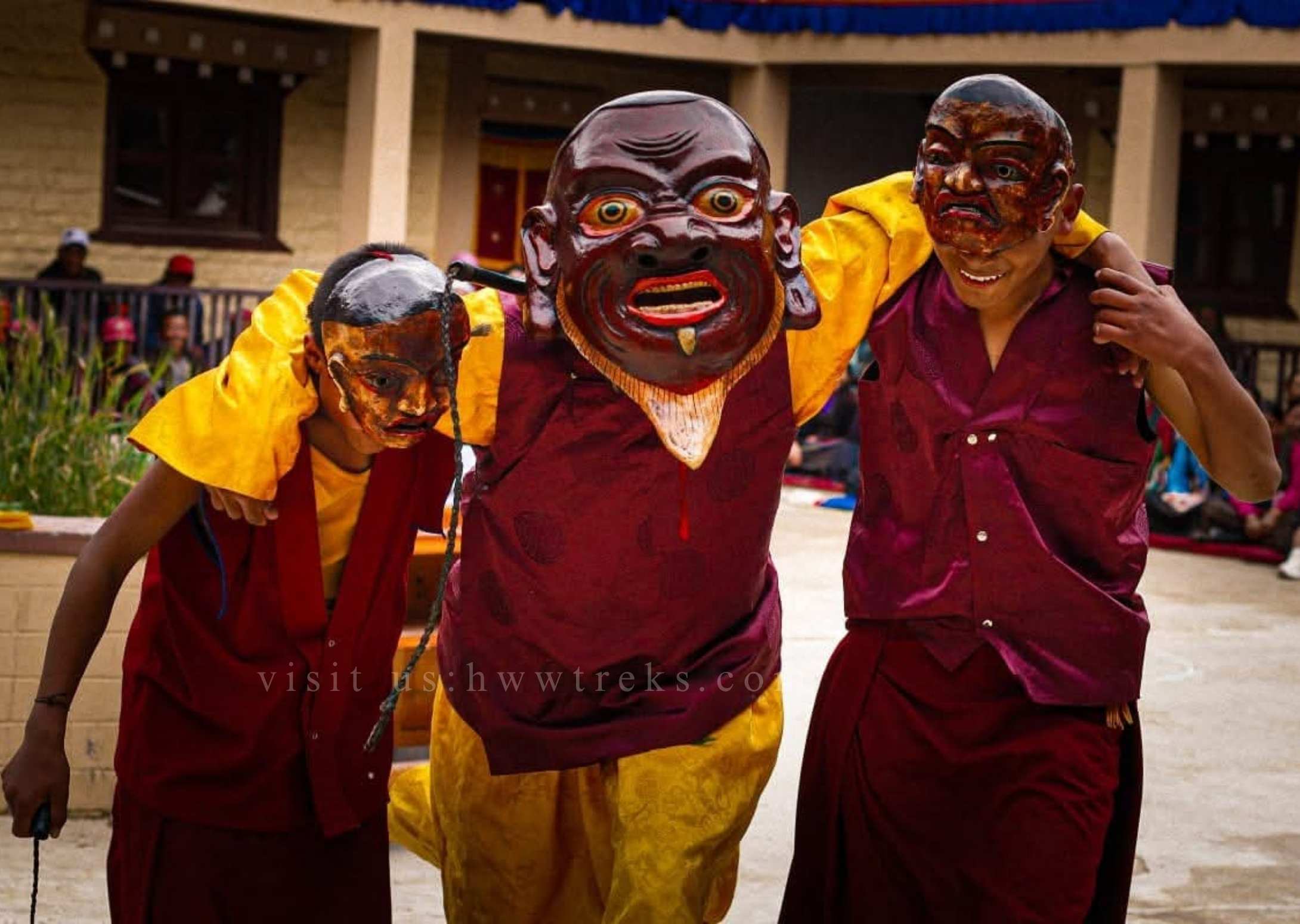
- 06/20/2025
- Tags: festival of Mustang Bagcham
- Himalayan Wander Walkers
The Sacred Bagcham Of Namgyal Monastery
In the remote, mystical land of Upper Mustang lies a cultural gem that has endured for centuries, connecting the ancient past to the spiritual present: the sacred ritual dance known as Bagcham. Tucked away in the tranquil village of Namgyal, this sacred masked dance isn't just a ceremonial performance; it's a spiritual invocation, a cultural celebration, and a profound protector ritual performed annually in one of the oldest monasteries in the region.
For those who venture beyond the trails and into the heart of Mustang's cultural soul, the Bagcham offers an unforgettable experience that reveals the depth of Buddhist devotion and the resilience of Himalayan heritage. The thundering of drums, the hypnotic movements of masked dancers, and the sacred space of Namgyal Monastery together create an atmosphere that is both mystical and powerful.
Let’s take a deeper look into the monastery where it all happens, the powerful origins of Bagcham, and its ongoing significance.
Contents [hide]
A Monastery Rooted in History

Namgyal Monastery, also known as Lowo Namgyal Chode, has stood for nearly a thousand years as a spiritual and cultural pillar of Mustang. The monastery took its present form when Ngorchen Kunga Zangpo, a great master of the Sakya tradition, established it as a monastic school. Over the centuries, it has been shaped and preserved by some of the greatest Buddhist scholars and practitioners, including Jamyang Sherab Gyatso, Panchen Shakya Chokden, and Lho Rinpoche, the founder of Mustang’s Buddhist tradition.
What is Bagcham?
 Among the many sacred practices preserved in Mustang, masked dances hold a special place. These ritual dances are more than performances; they are living expressions of spiritual teachings. One of the most revered among them is the Putra Cham, or Bagcham, a powerful protector ritual performed to remove obstacles and shield the land and its people.
Among the many sacred practices preserved in Mustang, masked dances hold a special place. These ritual dances are more than performances; they are living expressions of spiritual teachings. One of the most revered among them is the Putra Cham, or Bagcham, a powerful protector ritual performed to remove obstacles and shield the land and its people.
The central figure of Bagcham is Putra, a Tibetan deity associated with Mahākāla, the fierce and compassionate protector of the Dharma.
A Story of Miracles and Protection
The origins of Bagcham are deeply tied to the protection of Mustang in times of danger. According to oral tradition, the dance was first performed during the time of the Panchen Rinpoche to ward off foreign threats and maintain harmony.
 One well-known legend tells of a time when King Tashi Gon faced an imminent invasion. He turned to Panchen Shakya Chokden, who was then residing in Namgyal Monastery. As the king pleaded for help, the Panchen Rinpoche, calmly eating his evening meal, instructed his attendant to throw a handful of tsampa (roasted barley flour) onto the roof. Incredibly, a giant crow appeared, seized the tsampa, and flew toward the invading army. Moments later, a snowstorm swept through the mountains, blocking the passes and forcing the enemy to retreat.
One well-known legend tells of a time when King Tashi Gon faced an imminent invasion. He turned to Panchen Shakya Chokden, who was then residing in Namgyal Monastery. As the king pleaded for help, the Panchen Rinpoche, calmly eating his evening meal, instructed his attendant to throw a handful of tsampa (roasted barley flour) onto the roof. Incredibly, a giant crow appeared, seized the tsampa, and flew toward the invading army. Moments later, a snowstorm swept through the mountains, blocking the passes and forcing the enemy to retreat.
This event became a symbol of the power of protector practices and gave rise to the Mahākāla Cham tradition.
The Legacy of Mahākāla
Panchen Shakya Chokden was known for his deep realization of the Four-Faced Mahākāla (Palgon Zhalzhipa, ”ཞལ་བཞི་པ”). Though many requested the transmission of this intense spiritual practice, he entrusted it only to one qualified yogi: Samtse Kunpangpa. From this transmission, the Mahākāla Cham, today known as Bagcham, was born.
Performed with ancient masks believed to have been brought from Bod Serdokchen in Central Tibet, this dance is not only a ritual but a visual prayer, calling upon fierce compassion to clear obstacles and protect the teachings of the Buddha.
When Is Bagcham Performed?

Traditionally, Bagcham was held on the 29th day of the 9th month in the Tibetan lunar calendar. However, over time and due to various changes in local conditions, it is now performed annually on the 29th day of the 5th month of the Tibetan calendar. It continues to serve not just as a sacred ritual but as a cultural gathering for the people of Namgyal and neighboring villages, who come together to witness the blessing and spiritual energy of this timeless dance.
Conclusion
Bagcham is more than just a ritual. It's a living link to the past, a symbol of resilience, and a protector of Mustang's spiritual identity. For those fortunate enough to witness it, the experience is unforgettable, a rare glimpse into a tradition that continues to thrive in the high mountains of Nepal.
As travelers and seekers, may we learn not only to explore the outer landscapes of places like Mustang but also to honor the inner landscapes shaped by centuries of wisdom, ritual, and faith.
Read about the famous Tiji Festival of the Upper Mustang .